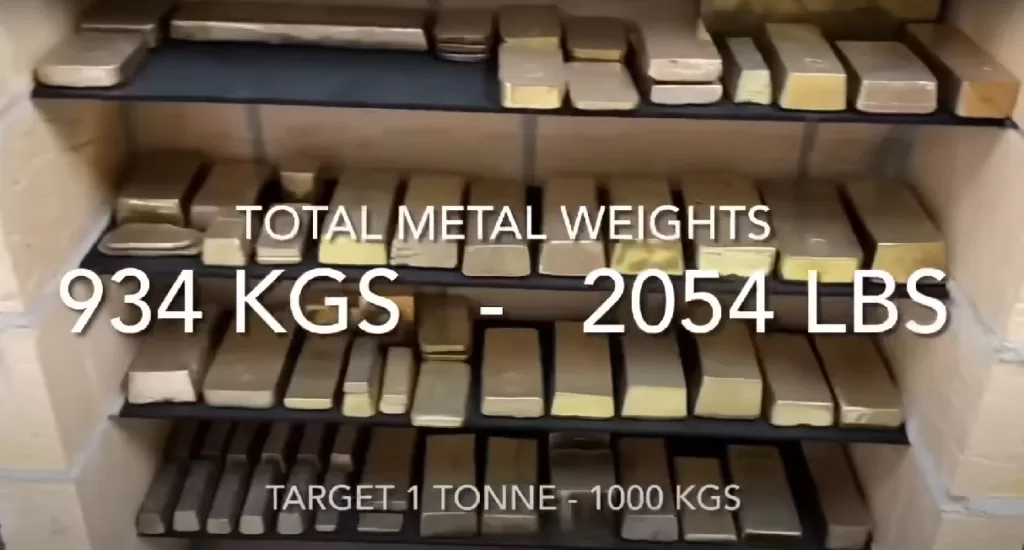In his latest video, bigstackD Casting displays his current metal ingot collection. Watch the video below or view the clip on YouTube. Continue reading to learn more about the process of casting metal ingots – a service that I intend to provide to Moorish state governments someday for the purpose of minting coins.
Clip of bigstackD Casting metal ingot collection
The Art of Casting Metal Ingots
Casting is a fascinating process that transforms molten metal into solid objects, allowing the creation of intricate shapes and designs. From simple household items to complex machinery parts, the casting process has played a vital role in shaping our world.
The process of casting metal ingots starts with the selection of the right metal. Metals like aluminum, iron, brass, and bronze are commonly used for casting. Once the metal is selected, it is melted in a furnace until it reaches the desired temperature and consistency.
The next step is to pour the molten metal into a mold, which can be made of sand, metal, or other materials. The mold is designed to hold the metal in the desired shape while it cools and solidifies. The mold is usually placed on a casting platform or a gating system that controls the flow of metal into the mold.
After the metal has cooled and solidified, the mold is removed, revealing the solid metal ingot. The ingot is then removed from the mold and is subjected to a series of cleaning, cutting, and finishing processes. This may include trimming, grinding, sandblasting, polishing, and heat treatment.
The casting process has come a long way since its origins. Modern casting techniques, like investment casting and sand casting, have made it possible to produce metal ingots with high precision and accuracy. Computer-aided design (CAD) and computer-aided manufacturing (CAM) have also revolutionized the casting process, making it easier to create complex shapes and designs with ease.
The Economic Benefits of Home Casting
Casting metal objects at home can bring about a range of economic benefits for both individuals and communities. For individuals, home casting offers a cost-effective way to produce valuable items, from jewelry to machinery parts. This can help to reduce expenses and increase savings.
For communities, home casting can provide a source of income through the sale of handmade items, leading to job creation and stimulation of the local economy. Additionally, home casting offers an alternative to imported products, promoting self-sufficiency and supporting local businesses.

In conclusion, the casting of metal ingots is a complex process that requires the right equipment, materials, and skills. From the selection of metal to the final finishing, each step is critical in ensuring the quality and integrity of the finished product. Whether you are a professional metalworker or a hobbyist, the art of casting metal ingots is a fascinating journey of creativity and transformation.

